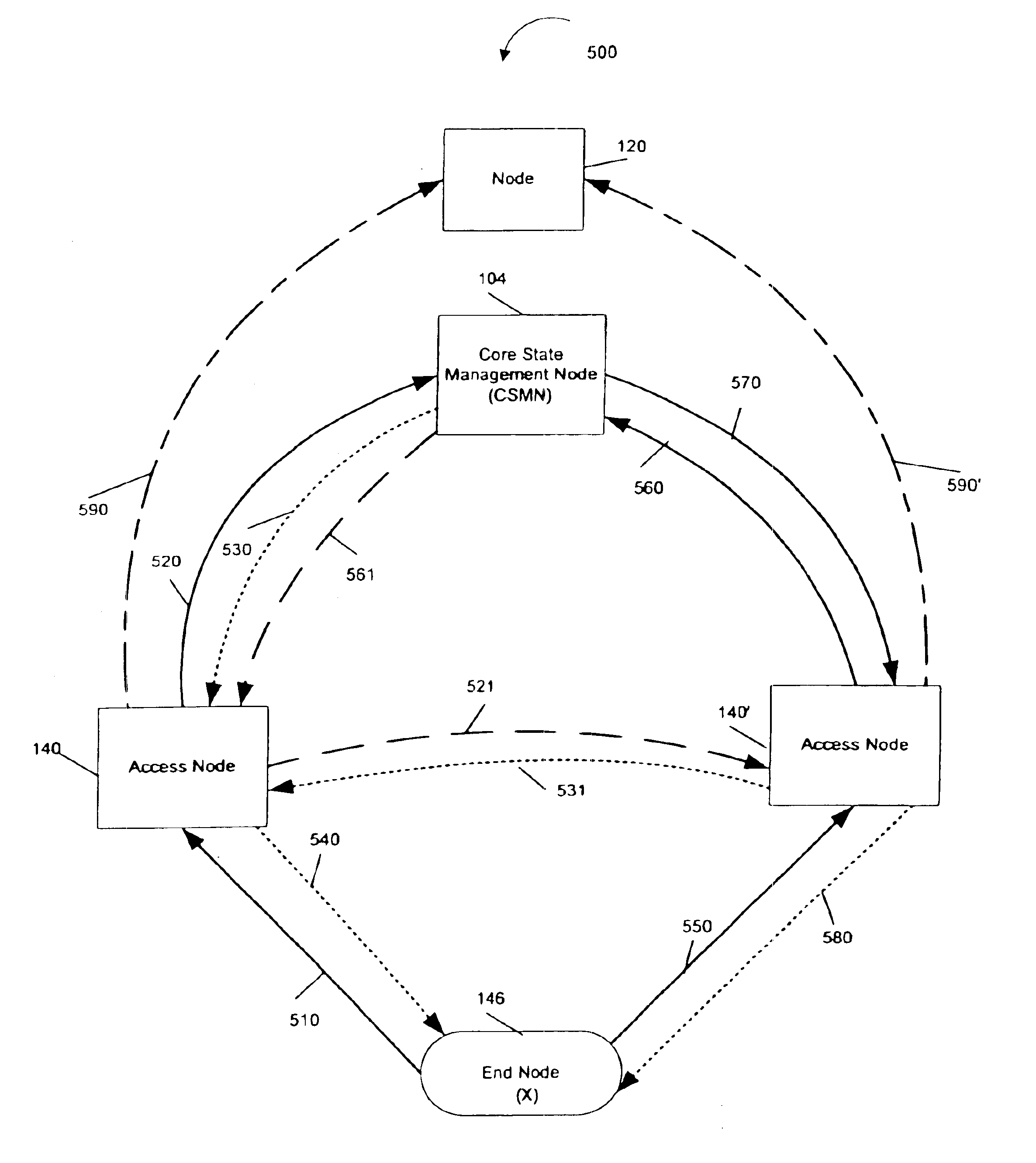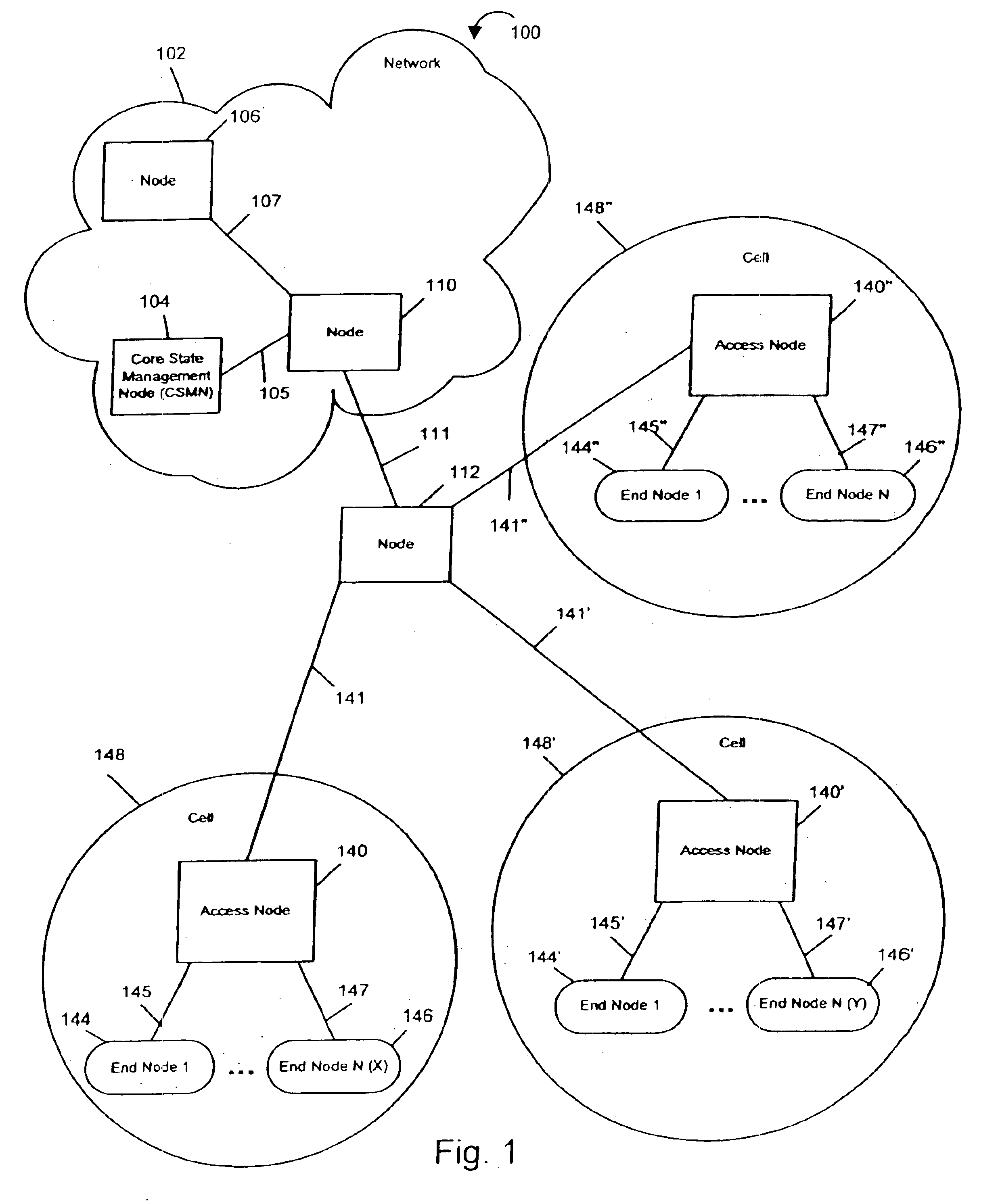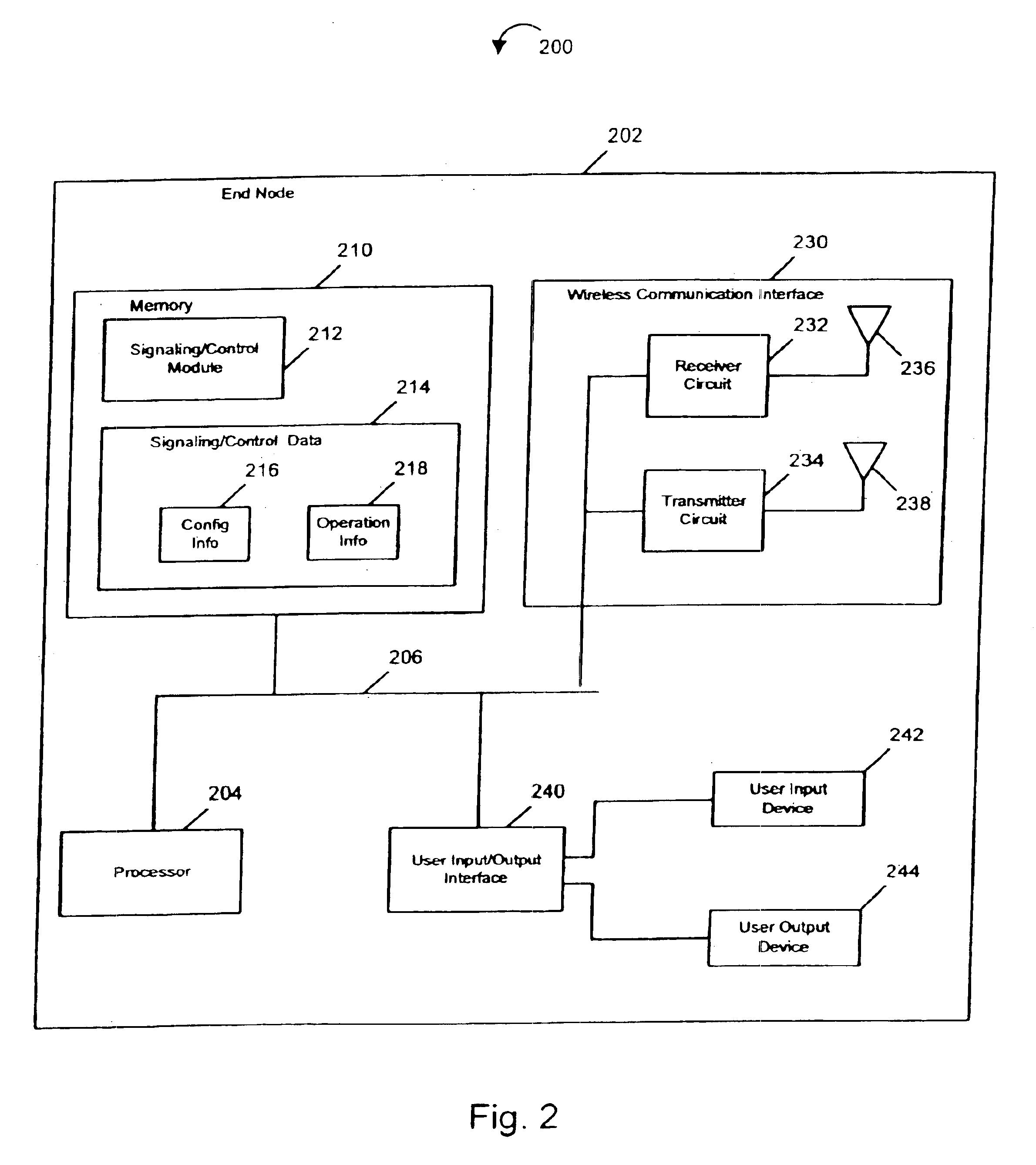Methods and apparatus for the utilization of core based nodes for state transfer
a technology of state transfer and core based nodes, applied in the field of methods and apparatus for the utilization of core based nodes for state transfer, to achieve the effect of reducing the amount of signaling, reducing the number of information retrieval operations, and reducing the delay in tim
- Summary
- Abstract
- Description
- Claims
- Application Information
AI Technical Summary
Benefits of technology
Problems solved by technology
Method used
Image
Examples
Embodiment Construction
The methods and apparatus of the present invention for storing, manipulating, retrieving, and forwarding state, e.g., context and other information, used to support communications sessions with one or more end nodes, e.g., mobile devices, can be used with a wide range of communications systems. For example the invention can be used with systems which support mobile communications devices such as notebook computers equipped with modems, PDAs, and a wide variety of other devices which support wireless interfaces in the interests of device mobility.
FIG. 1 illustrates an exemplary communication system 100, e.g., a cellular communication network, which comprises a plurality of nodes interconnected by communications links. Nodes in the exemplary communication system 100 exchange information using signals, e.g., messages, based on communication protocols, e.g., the Internet Protocol (IP). The communications links of the system 100 may be implemented, for example, using wires, fiber optic c...
PUM
 Login to View More
Login to View More Abstract
Description
Claims
Application Information
 Login to View More
Login to View More - R&D
- Intellectual Property
- Life Sciences
- Materials
- Tech Scout
- Unparalleled Data Quality
- Higher Quality Content
- 60% Fewer Hallucinations
Browse by: Latest US Patents, China's latest patents, Technical Efficacy Thesaurus, Application Domain, Technology Topic, Popular Technical Reports.
© 2025 PatSnap. All rights reserved.Legal|Privacy policy|Modern Slavery Act Transparency Statement|Sitemap|About US| Contact US: help@patsnap.com



